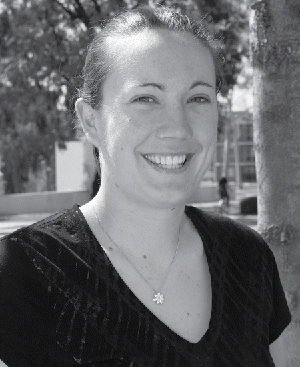In the famous words of Bob Dylan, “The times they are a-changin’.” The educational landscape seems to be shifting more significantly and rapidly than at any other time throughout history. We have new national standards, which have been adopted by a number of states, new policies and laws (e.g., Every Student Succeeds Act), an increasingly more diverse student population, and widespread access to new technologies and the Internet. So, how do we prepare teachers for a lifetime of work in a dynamic and evolving field? Well, fortunately, we do not have to do it alone. In fact, as many scholars have noted, isolation is the enemy of improvement.
Many educators are using digital tools to cultivate professional learning networks that allow them to overcome the feelings of isolation they face while working behind closed doors. Professional learning networks (PLNs) are “uniquely personalized, complex systems of interactions consisting of people, resources, and digital tools that support ongoing learning and professional growth” (Trust, Krutka, & Carpenter, Citation2016, p. 28). I was first introduced to the concept of a PLN during one of my graduate courses at San Diego State University. As part of this course, we were asked to use digital tools (e.g., Google Reader, Twitter) to connect with people and resources in the field of education technology. Each week we had to report on what we learned from our PLN and how it developed over time. This activity was one of the most influential learning experiences I have ever had because it showed me that (1) I could drive my own learning and (2) I was not alone.
In 2010, when I went to work as an instructional aide at a low-performing elementary school, I witnessed firsthand the burnout and feelings of frustration that teachers felt as they tried to figure out how to improve their teaching in isolation. Throughout this experience, I could not help but wonder: If these teachers had cultivated their own PLNs and connected with other educators outside of the school, would they have acquired new knowledge, skills, and ideas to overcome the obstacles they faced?
Teachers face numerous challenges in their practice, and the changes in the field of education make it even harder to keep up with and stay excited about the profession. Therefore, it is important that scholars, teacher educators, and administrators join together to prepare teachers to navigate the complexities of the profession. Thus, our theme, and rallying cry, this year for the ISTE Teacher Education Network is “Together We Are Better.” Our leadership team is already working on incredible projects that bring educators together, tap into the wisdom of the crowd, and create opportunities for social learning. Past President Teresa Foulger is leading an effort to crowdsource technology competencies for teacher educators to enrich preservice teachers’ technology preparation experiences. Special Education Chair Jennifer Courduff is organizing and editing a series of videos from Special Education experts, and Technology in Action Lead Anne Leftwich is crowdsourcing videos demonstrating effective use of technology in K–12 classrooms. Both of these projects are designed to provide teacher educators with tools for enhancing their practice. During the 2016–2017 school year, the entire leadership team will be hosting monthly Twitter Chats (#TEPLN) to engage Teacher Education Network members in conversations about important topics and to foster connections for collaboration and learning. We also have the Journal of Digital Learning in Teacher Education as a resource for collectively advancing the work of teacher educators. We encourage you to connect with other Teacher Education Network members around similar interests, conduct research, and share your findings with a broader audience through this peer-reviewed, refereed journal.
We have a strong leadership team this year, consisting of returning members (Randy Hansen, Past President; Dennis McElroy, Newsletter Editor; Ritwa Smith, Social Media Coordinator; Anne Leftwich, Technology in Action Lead; Jennifer Courduff, Special Education Chair) and new members (Chip Cash, Communications Chair; Jana Craig Hare, Professional Development Chair; Cheryl Panzo and Rachelle Poth, Innovation and Resources; Wren Bump, Traci Piltz, and Shelly Vohra, Social Media Coordinators; Pena Bedesem, Special Education Committee). We are excited to connect, collaborate, and learn with all of you. We encourage you to get involved, share your expertise, and embody our theme: “Together We Are Better.” I am looking forward to a year of learning together.
Reference
- Trust, T., Krutka, D. G., & Carpenter, J. P. (2016). “Together we are better”: Professional learning networks for teachers. Computers & Education, 102, 15–34. doi:10.1016/j.compedu.2016.06.007

